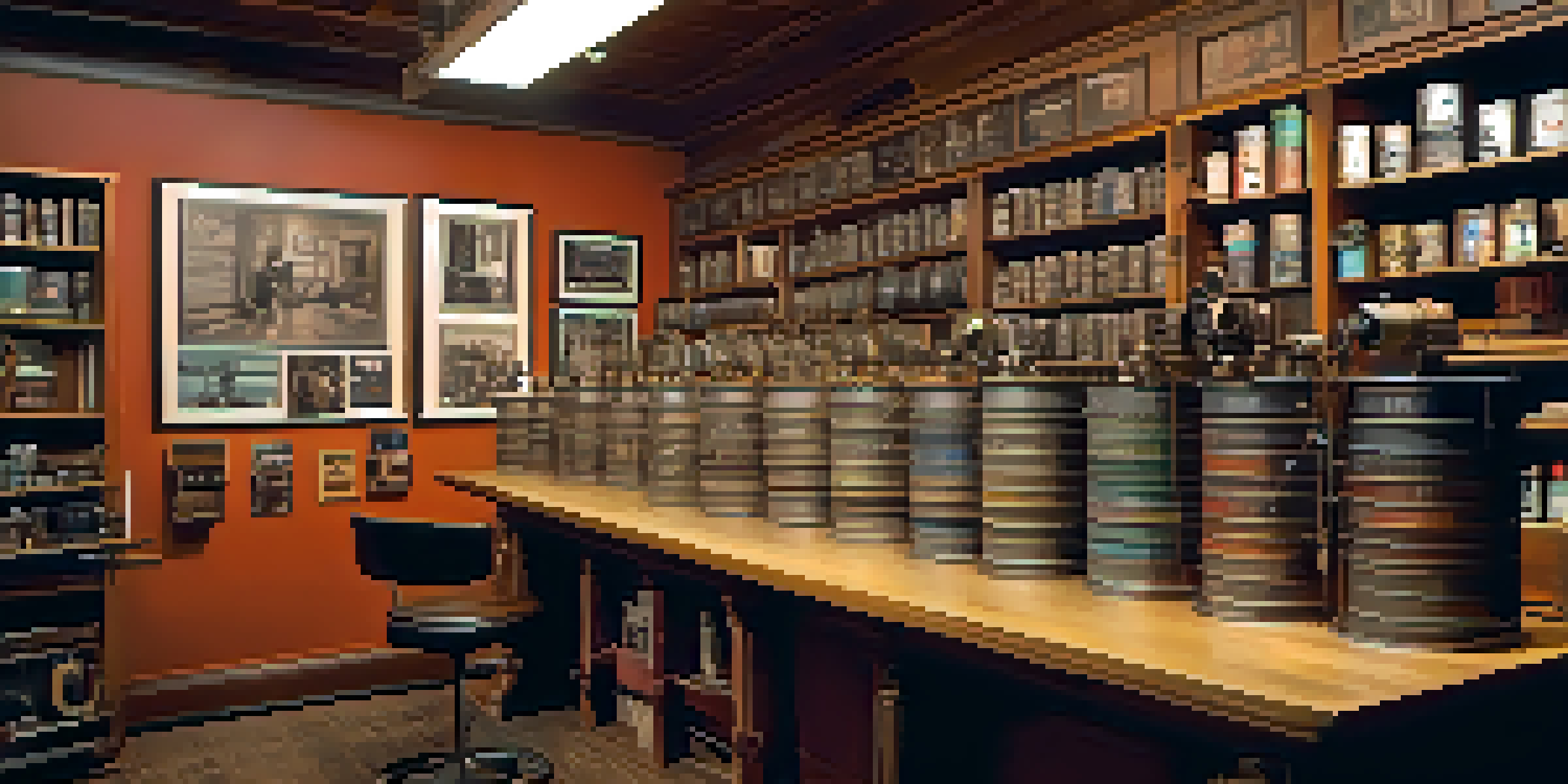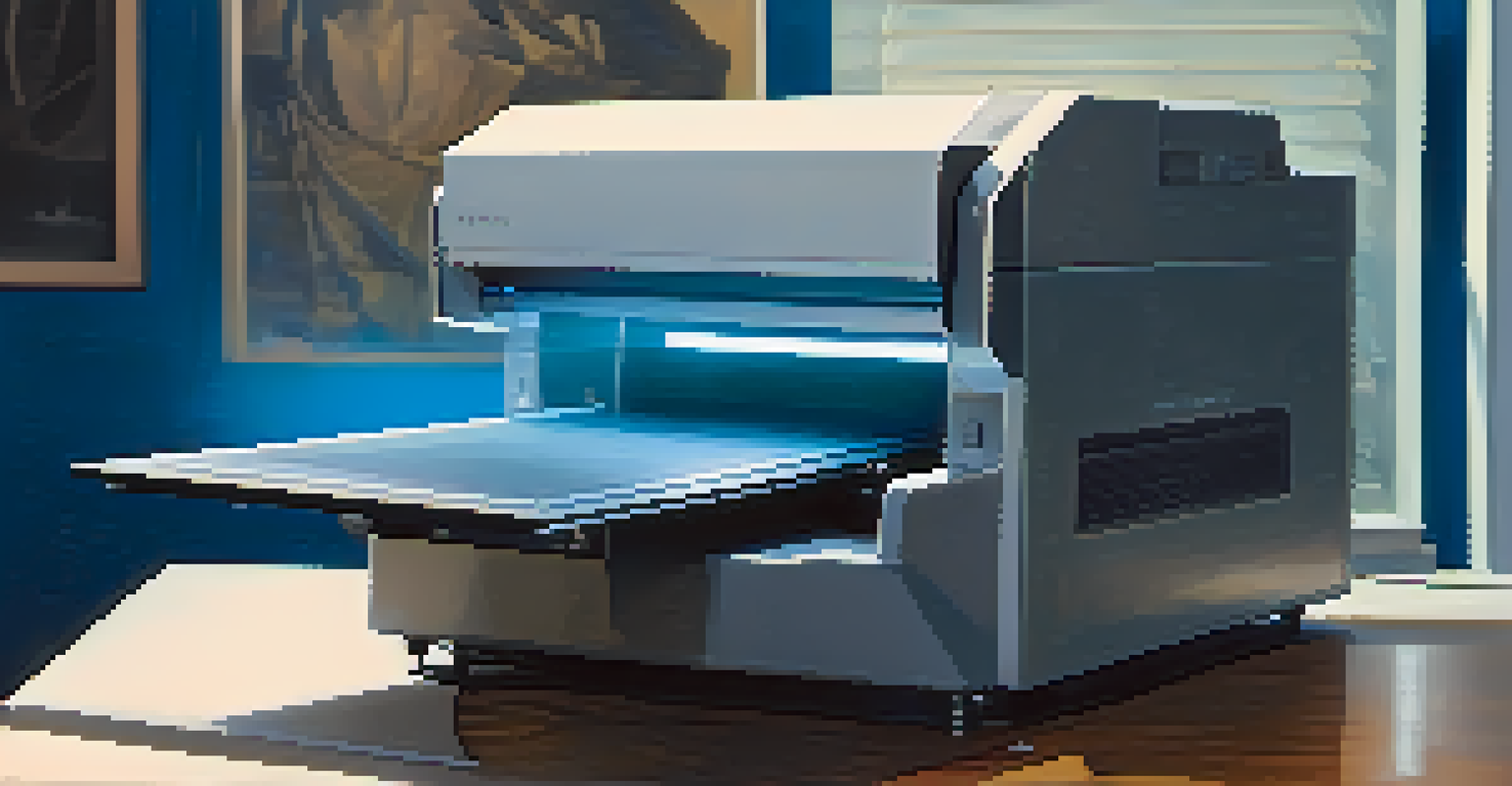Modern Technology's Influence on Film Restoration Processes

Understanding Film Restoration: A Brief Overview
Film restoration is the process of preserving and reviving old films to their original glory. It involves repairing damaged reels, correcting color and sound, and ultimately ensuring that these cinematic treasures can be enjoyed by future generations. With the continuous passage of time, older films often suffer from deterioration, making restoration essential for historical and cultural preservation.
Film restoration is not just about preserving the past; it's about ensuring that future generations can experience the artistic vision of filmmakers who came before us.
Historically, restoration was a labor-intensive process, relying heavily on manual techniques and expert craftsmanship. Technicians would spend countless hours cleaning, splicing, and repairing physical film stock. However, as technology has advanced, the methods of restoration have evolved significantly, leading to faster and more efficient processes.
Modern film restoration combines traditional skills with cutting-edge technology. This blending not only enhances the quality of restored films but also expands the possibilities for recovering lost content and improving the viewing experience. The influence of modern technology on this field cannot be overstated, as it has revolutionized how we preserve cinematic history.
The Role of Digital Technology in Restoration
Digital technology has become a cornerstone in film restoration, allowing for more precise and efficient work. High-resolution scanning of film negatives enables restorers to capture every detail, making it easier to identify and address issues like scratches, dirt, and color fading. This process is akin to using a magnifying glass; it reveals imperfections that might have gone unnoticed with the naked eye.

One of the most significant advancements in digital restoration is the use of software that can analyze and correct imperfections automatically. For instance, digital tools can digitally remove blemishes and stabilize shaky footage, which were painstakingly done by hand in the past. This not only saves time but also allows technicians to focus on creative aspects of restoration.
Modern Tech Transforms Film Restoration
Advancements in digital technology and AI have revolutionized film restoration, making it faster and more precise.
Moreover, digital technology facilitates the preservation of audio tracks, ensuring that the sound quality matches the visual enhancements. By synchronizing and restoring audio alongside the visuals, films can be experienced as they were originally intended, immersing audiences in the story and atmosphere. The digital age has truly transformed how we approach the art of film restoration.
Artificial Intelligence: A Game Changer in Restoration
Artificial Intelligence (AI) has emerged as a transformative force in film restoration processes. With its ability to analyze vast amounts of data quickly, AI can identify patterns and anomalies in film footage that humans might overlook. Imagine having an ultra-keen eye that never gets tired—this is what AI brings to the table.
Technology is a tool, and like any tool, it can create or destroy; it is up to us to shape it into something that serves the future of cinema.
AI algorithms are increasingly being used to automate tedious tasks such as frame-by-frame restoration and color correction. For example, AI can learn from existing restored films to replicate styles and make informed decisions during the restoration process. This not only speeds up restoration but also maintains the artistic integrity of the original work.
Additionally, AI can aid in reconstructing lost scenes or segments of film. By leveraging machine learning techniques, it can predict and recreate frames that may have been damaged or missing entirely. This capability opens new avenues for restoring classic films, allowing audiences to experience stories that might otherwise have been lost to time.
The Impact of 4K Resolution on Film Restoration
The introduction of 4K resolution has significantly impacted film restoration, allowing for unparalleled detail in the final product. This higher resolution means that every frame of a film can be viewed with remarkable clarity, revealing textures and nuances that were previously hidden. It's like upgrading from a standard-definition television to a high-definition one; the difference is astonishing.
Restoration projects that utilize 4K technology can also enhance the viewing experience by providing audiences with an immersive experience that captures the original filmmaker's vision. The clarity of 4K resolution allows audiences to appreciate the artistry in cinematography, lighting, and set design in ways that were not possible with lower resolutions.
4K Resolution Enhances Viewing
The adoption of 4K resolution allows for unprecedented detail in restored films, enriching the audience experience.
Furthermore, 4K resolution restorations offer the chance to appeal to modern audiences who expect high-quality visuals. As streaming platforms and theaters increasingly adopt 4K technology, restoring films in this format ensures they remain relevant and accessible to new generations of viewers. This shift not only preserves history but also brings it into the contemporary cinematic landscape.
Crowdsourcing: A Collaborative Approach to Restoration
Crowdsourcing has emerged as an innovative approach to film restoration, tapping into the collective knowledge and resources of film enthusiasts and experts alike. By engaging the public, organizations can gather information, funding, and even hands-on help in restoring films that may need a little extra love. It’s a bit like a community potluck, where everyone brings something to the table.
Platforms dedicated to film restoration projects often allow fans to contribute by sharing their knowledge of a film's history or donating funds to help cover restoration costs. This collaborative approach fosters a sense of ownership and connection among film lovers, deepening their appreciation for cinematic heritage. It also democratizes the restoration process, making it accessible to a wider audience.
Moreover, crowdsourcing can lead to discoveries that surprise even the most seasoned professionals. Fans may possess rare memorabilia or insights that contribute to a more accurate restoration. By harnessing the power of the community, the film restoration process becomes a shared journey, celebrating the collective passion for cinema.
Challenges in Film Restoration with Modern Technology
While modern technology has greatly enhanced film restoration, it also presents its own set of challenges. One significant issue is the cost associated with high-quality restoration processes. Although digital tools and AI can expedite restoration, the initial investment in technology and skilled personnel can be substantial, making it difficult for smaller projects to get off the ground.
Additionally, there is the challenge of balancing technological advancements with preserving the integrity of the original film. As restorers embrace new techniques, they must remain vigilant to ensure that the essence of the film is not lost in the process. It’s a delicate dance between innovation and tradition, where the goal is to honor the filmmaker’s original vision while enhancing the viewing experience.
Crowdsourcing Boosts Restoration Efforts
Engaging film enthusiasts through crowdsourcing fosters community involvement and contributes valuable resources to restoration projects.
Finally, copyright and ownership issues can complicate restoration efforts. Ensuring that the rights to restored films are properly managed can be a daunting task, especially when multiple parties are involved. Navigating these legal waters requires careful planning and consideration, making it imperative to address these challenges head-on in the film restoration community.
The Future of Film Restoration: A Glimpse Ahead
As we look to the future, the landscape of film restoration is likely to continue evolving alongside technology. We can expect the integration of even more advanced AI solutions that will further streamline the restoration process. Imagine a future where films can be restored in days instead of months—this prospect is becoming increasingly realistic.
Moreover, the rise of virtual reality (VR) and augmented reality (AR) technologies could add new dimensions to how we experience restored films. These technologies may allow audiences to immerse themselves in the film's world, transforming the traditional viewing experience into something interactive and engaging. The possibilities for storytelling are endless.

Ultimately, the future of film restoration will hinge on collaboration among filmmakers, restorers, and audiences. By working together and embracing new technologies, we can ensure that the rich history of cinema is preserved and celebrated for generations to come. It's an exciting time to be involved in the world of film, as we stand on the brink of new discoveries and innovations.